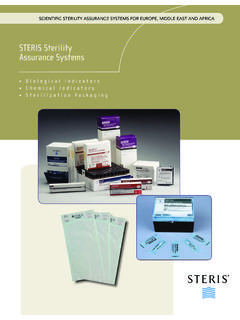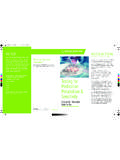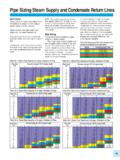Transcription of THE COMPLETE RECORDING SESSIONS - Diskografier
1 THE GARY MOORE DISCOGRAPHY. (The GM Bible). THE COMPLETE RECORDING SESSIONS . 1969 - 1994. Compiled by DDGMS. 1995. 1. I DEX. ABOUT GARY MOORE's CAREER Page 4. ABOUT THE BOOK Page 8. THE GARY MOORE BAND INDEX Page 10. GARY MOORE IN THE CHARTS Page 20. THE COMPLETE RECORDING SESSIONS - THE BEGINNING Page 23. 1969 Page 27. 1970 Page 29. 1971 Page 33. 1973 Page 35. 1974 Page 37. 1975 Page 41. 1976 Page 43. 1977 Page 45. 1978 Page 49. 1979 Page 60. 1980 Page 70. 1981 Page 74. 1982 Page 79. 1983 Page 85. 1984 Page 97. 1985 Page 107. 1986 Page 118. 1987 Page 125. 1988 Page 138. 1989 Page 141. 1990 Page 152. 1991 Page 168. 1992 Page 172. 1993 Page 182. 1994 Page 185. 1995 Page 189. THE RECORDS Page 192. 1969 Page 193. 1970 Page 194. 1971 Page 196. 1973 Page 197. 1974 Page 198. 1975 Page 199. 1976 Page 200. 1977 Page 201. 1978 Page 202. 1979 Page 205. 1980 Page 209. 1981 Page 211. 1982 Page 214. 1983 Page 216. 1984 Page 221.
2 1985 Page 226. 2. 1986 Page 231. 1987 Page 234. 1988 Page 242. 1989 Page 245. 1990 Page 250. 1991 Page 257. 1992 Page 261. 1993 Page 272. 1994 Page 278. 1995 Page 284. INDEX OF SONGS Page 287. INDEX OF TOUR DATES Page 336. INDEX OF MUSICIANS Page 357. INDEX TO DISCOGRAPHY Record types in alfabethically order Page 370. 3. ABOUT GARY MOORE's CAREER. Full name: Robert William Gary Moore. Born: April 4, 1952 in Belfast, Northern Ireland and sadly died Feb. 6, 2011 in the Kempinski hotel in Estepona, Costa del Sol, Spain from a heart attack. Many people first became aware of Gary Moore's music in 1990 after the release of his first blues album Still Got The Blues . His greatest hit record yet. Others may have become aware of him in 1982, where the majority of rock fans finally got to know him, when he released the album Corridors Of Power . Some may remember him from the periods with Thin Lizzy , and a few might remember him from his first solo album in 1973 Grinding Stone and only hardcore fans can remember him from his first band, the Irish Skid Row in 1969, though the band's first album was on the charts in the UK.
3 All in all it can be certified, that Gary Moore has been in and out of the RECORDING studios since 1969, where he - at a very young age - recorded two singles with Skid Row . And now - more than 30 years later he is still RECORDING as a major star, with a loyal following during his ups and downs. FROM THE START. As soon as Gary Moore had learned his lessons in a variety of school and childhood bands, his reputation grew fast. From the start he was in demand as a session musician and he may have been forced to do it just to stay alive? He played with folk-rock groups such as Dr. Strangely Strange and Granny's Intentions , but it was with Skid Row that he got the opportunity to show his great skills on the guitar. The records of Skid Row show that they had listened to the late super group Cream. Gary Moore does not sing much on these first sides, but on the song Felicity , he is given the opportunity to sing scat, simultaneously with excellent guitar playing.
4 Unfortunately the band was too self-centred to reach a wider audience. The records are interesting but too incoherent. Phil Lynott was the lead singer on one single (the first) with Skid Row . THE FIRST SOLO RECORD. After Skid Row , Gary Moore tried to go solo in 1973. His first record was too much like the Skid Row . albums to interest many people. The mix of blues-rock, fusion, funk, jazz and rock are rather special, but it must have appealed to GM, as this was the kind of music he was playing up until 1982 (apart from the Lizzy periods). The first period with Thin Lizzy was short. Six months of hard living was enough. GM later said that it was booze and musically automatic pilot. Only a couple of songs were recorded with Lizzy. After a little session work, GM met Jon Hiseman in august 1974. They formed Colosseum II (reformed, as Colosseum had existed since 1969), but it took almost a year to get the band together.
5 In this great band he met some fellow musicians who would follow him on a string of his own records later on. These are Don Airey and Neil Murray. Three records with Colosseum II were released. The critics gave good reviews, but the records did not sell accordingly. Nobody wanted jazz-rock. It is an area, where success is hard to come by. It's too jazzy to rock fans and too rocking to jazz fans. But Gary Moore got the chance to prove his abilities as a guitar player along with excellent playing from the competent musicians in the band. If you like fabulous guitar playing, the records of Colosseum II are recommendable. After a little more session work, GM recorded one more solo album on which Thin Lizzy participated (one half of the record is Thin Lizzy-like and the other half Colosseum II-like music). On the record - Back On The Streets - was Parisienne Walkways , that became a number 8 hit in the UK. Unfortunately GM.
6 Did not get the credits as solo artist from the hit, because he was touring with Thin Lizzy at the time Parisienne Walkways was on the charts. At some of the concerts though, Gary and the song was featured. PERMA E T MEMBER OF THI LIZZY. During a break in Colosseum II , GM played with Thin Lizzy for half a year. In 1978 he became a permanent member of Thin Lizzy - or so was the plan. After RECORDING the eminent album Black Rose , Thin Lizzy went on a US tour as opening act for the group Journey . During this tour GM got enough of the life within Thin Lizzy . He stayed away after a concert in Oakland. (Thin Lizzy got Midge Ure to replace him!). 4. THE JET PERIOD. Gary Moore's later recordings for JET were not great hits and most of them were not released until several years later. But since then they have been released again and again (much to GM's annoyance). GM had problems with the record company about what should be released and in which form.
7 But no matter how bad GM must have been treated by Jet, it is during this period (1978-81) that the background for his later breakthrough is formed. This period, which was very fruitful for GM as a musician and a composer, showed that if he put aside the jazzy way of playing, he was able to get a big rock sound and many fans would follow. He first experienced that with his Los Angeles based group G-Force - that folded rather quick due to problems with working permits - and then as Gary Moore and Friends . In 1981 GM became a member of Greg Lake's solo project. Lake was famous for working in Emerson, Lake & Palmer and played grandiose and well produced music. Gary Moore apparently felt at home in the band. His contribution ended after two albums. The GM classic Nuclear Attack is on the first album with Greg Lake, still a very fine album today. THE FI AL BREAKTHROUGH. In 1982 came the final breakthrough. With Corridors Of Power GM once and for all showed that he was the fastest and most exciting guitar player the rock scene had seen in years.
8 On the track End Of The World his guitar is wailing like an ambulance, and the guest vocalist Jack Bruce delivers a dazzling vocal performance, which reminds us of Cream 15 years earlier. At this time GM's new record company Virgin starts on the special release policy , which turns collecting Gary Moore records to a sort of book-keeping job! There is 7 vinyls, 12 vinyls, LPs, CD-singles, special and limited editions, collectors editions, picture discs, double singles, bags, posters, and gatefold sleeves and so on. Before joining Thin Lizzy at Hammersmith Odeon for a farewell concert in March 1983, GM played once again (third time around) with drummer Cozy Powell on one of his solo albums. In Japan a live album with GM was released. A couple of years later it was released in Europe. GM was becoming a real big name in Japan. In the beginning of 1984 came the follow up to Corridors Of Power , it was Victims Of The Future and it was also a success.
9 Here the song Empty Rooms had its premiere, along with GM's Murder In The Skies which is his comment on the shooting down of a Korean jumbo jet. The world tour was recorded for a live album that shows that GM has not lost the grip on his audience. In late 84 GM returns to Ireland and gives a string of concerts, which were filmed for the video Emerald Aisles . Almost all the songs have been released on CDs. In 1985 Empty Rooms was re-recorded in the pursuit of a hit. GM and Phil Lynott are united in the studio after some years apart, where they even have been unable to speak to each other. Now they record three songs and get high up in the charts. GM contributes to the new Beach Boys LP!! He starts an exciting cooperation (again) with Glen Hughes (known from Deep Purple), but the two of them can't relate to each other (again!) Glenn Hughes thinks that the band should be his backup band, but GM thinks of Glenn Hughes just being the singer (and bass player) in GM's band.
10 A much written about break-up follows. Most important is the result of the work in the RECORDING studio, and that is great. The album Run For Cover . (Maybe a sound advice?) contains the Lynott collaboration, the Hughes songs and another re- RECORDING of Empty Rooms , (which of course is released in a long and short version), plus some extra songs. This is a great album. From now on you will have to buy CDs, as there will be bonus songs in this format. THE IRISH IS BACK. In 1986 the album Wild Frontier with the track Over The Hills And Far Away is recorded and the Virgin release policy reaches its peak. This track is edited in a long and short version and the three versions 5. are released on at least 14 different records?! The album revives the Irish sound from Black Rose and it becomes a great hit (the Irish sound must appeal, as Black Rose was no. 2 and this album became no. 8 on the charts). Phil Lynott, who died in January that year, should have sung the lead vocal on the title track.







